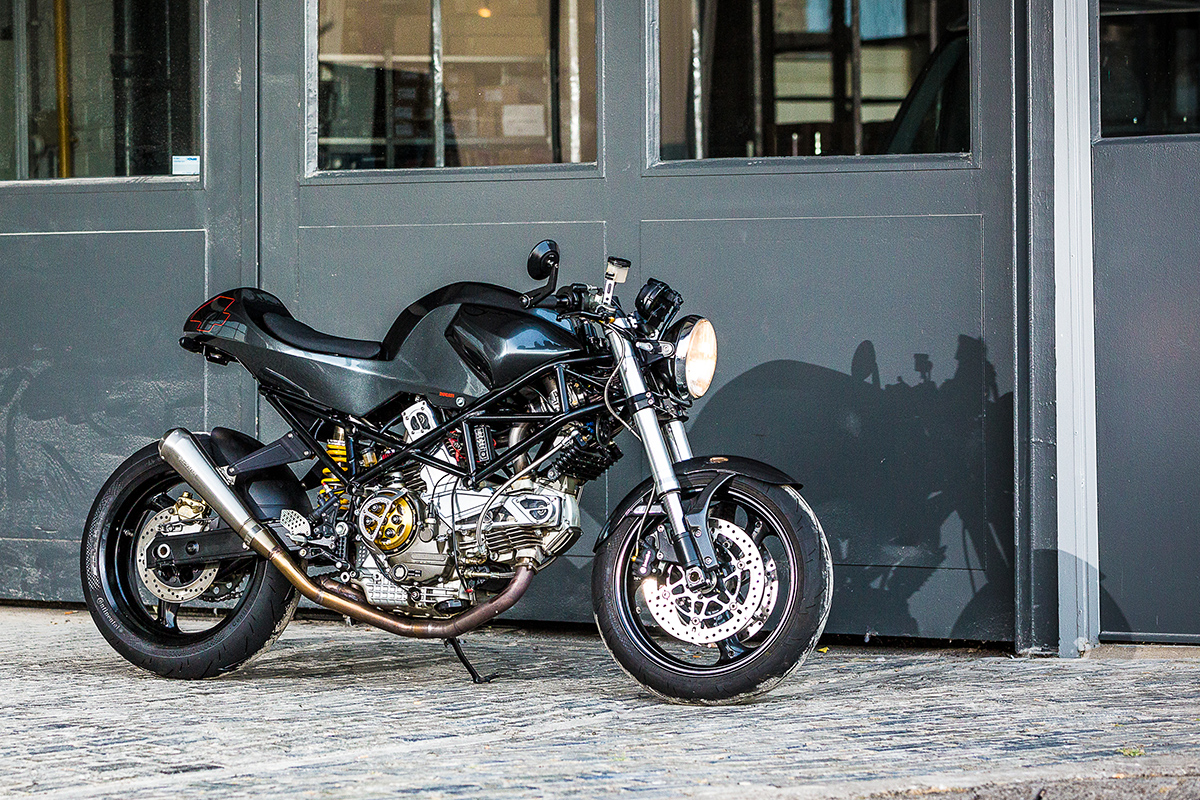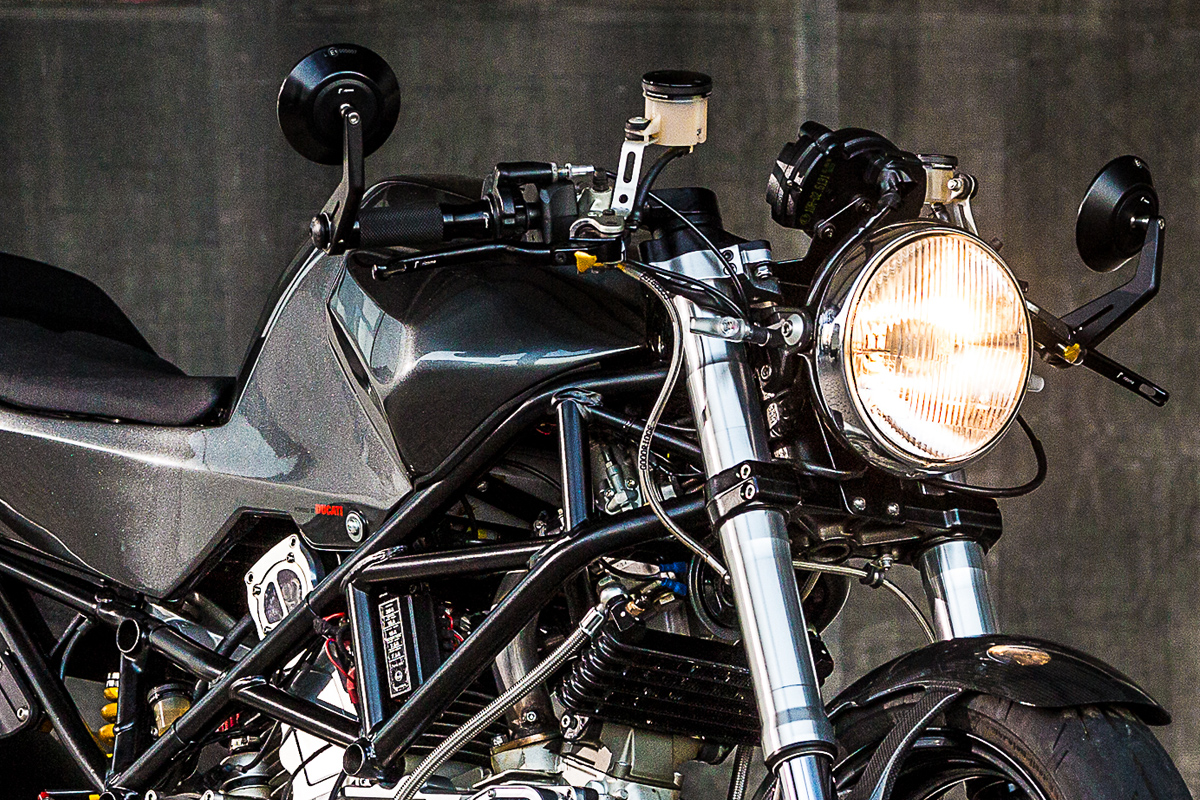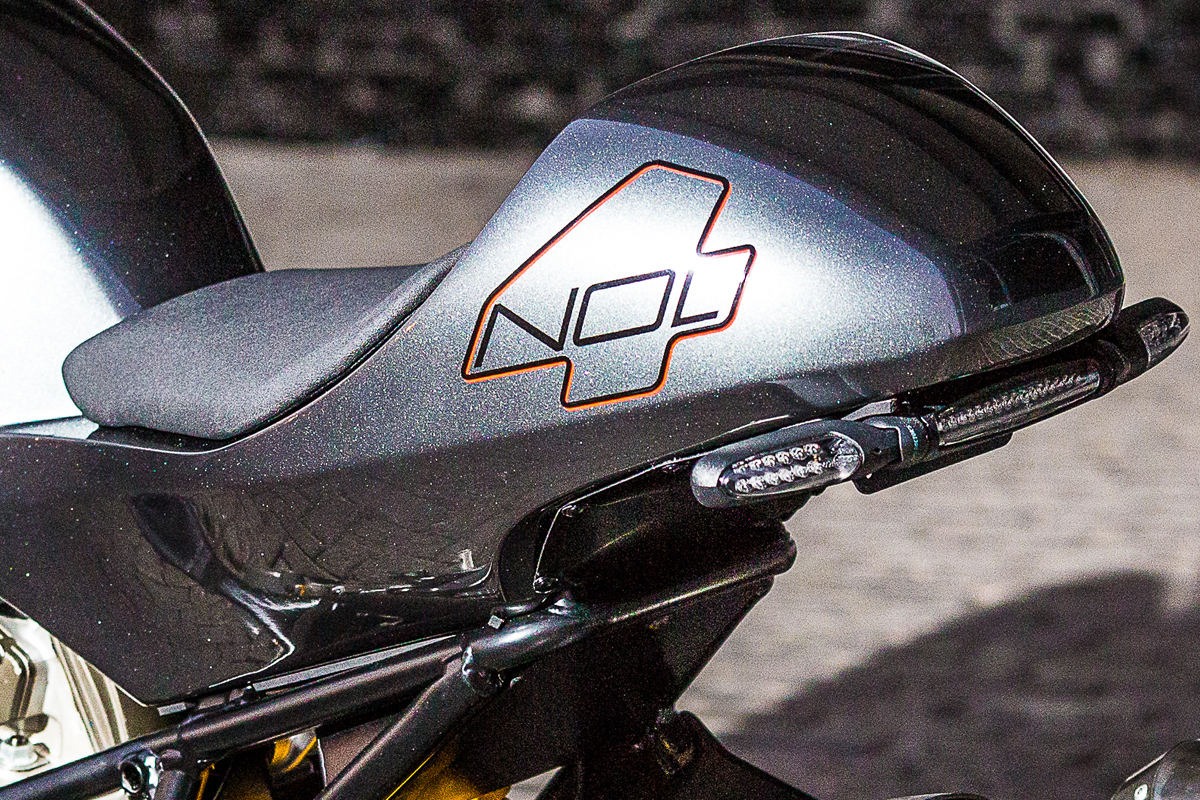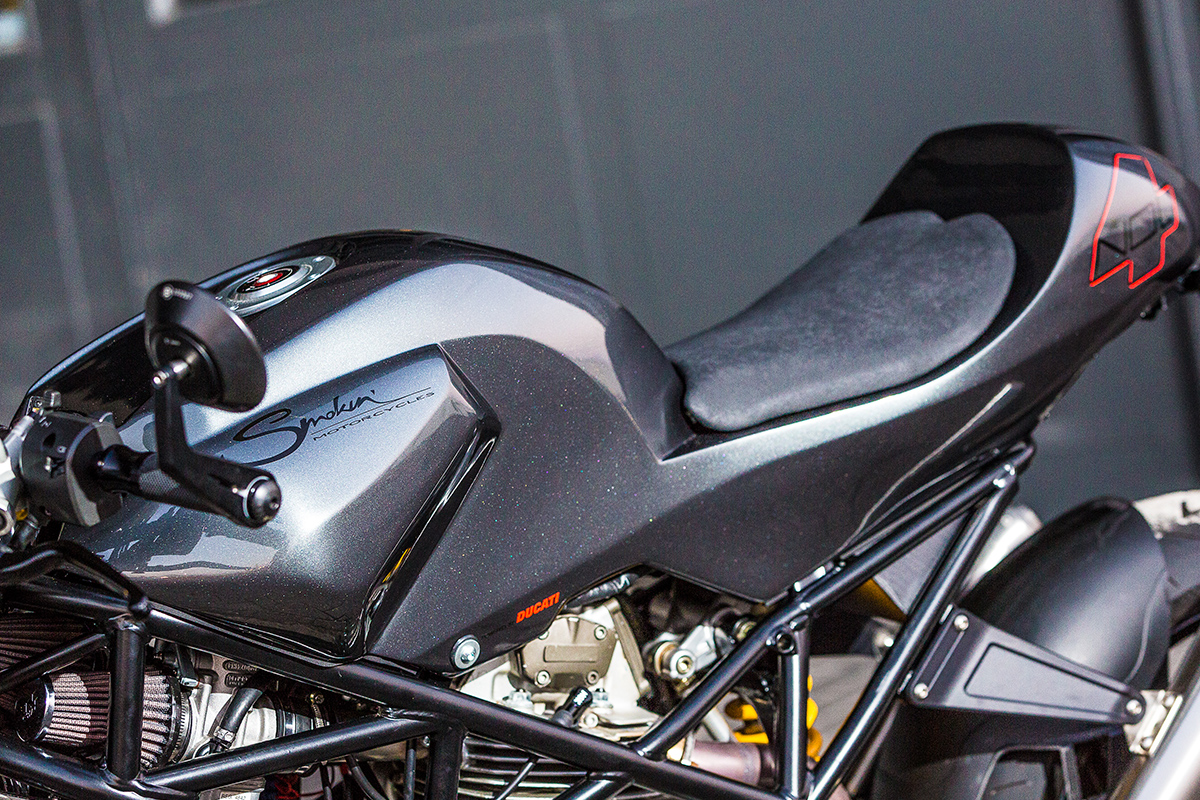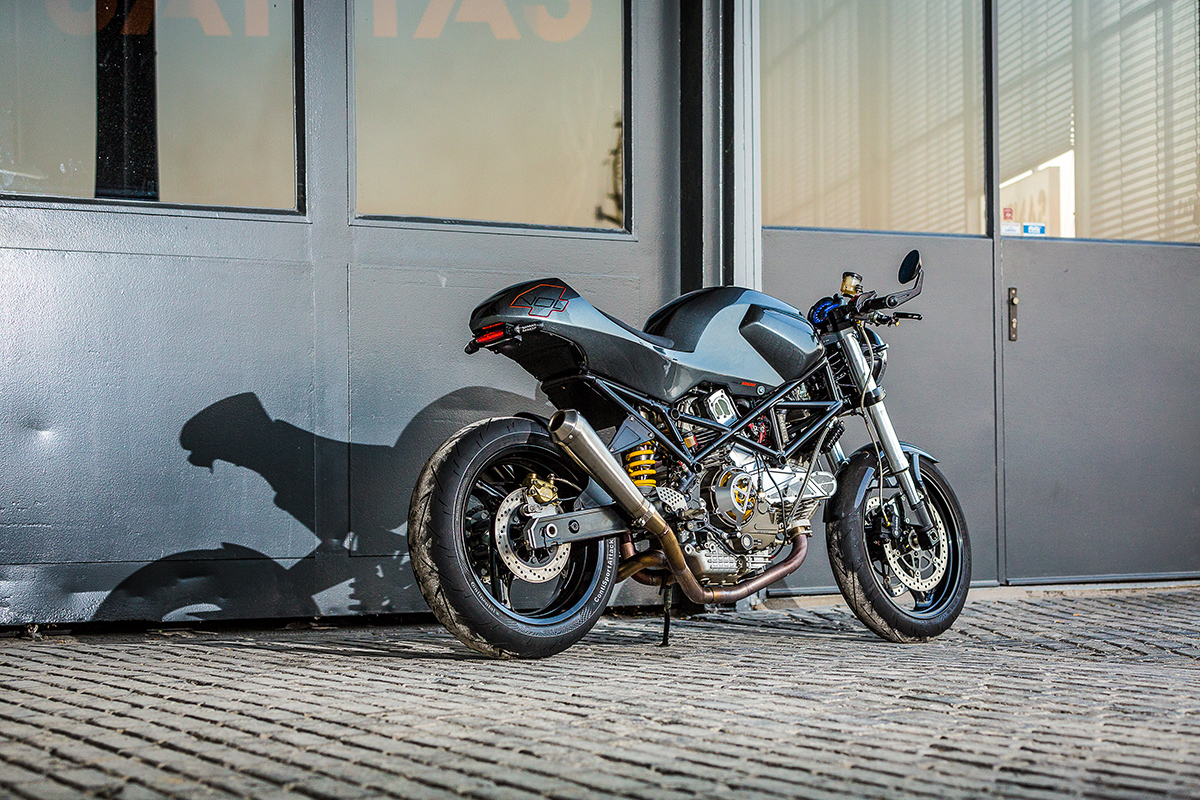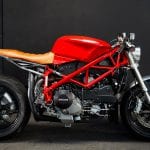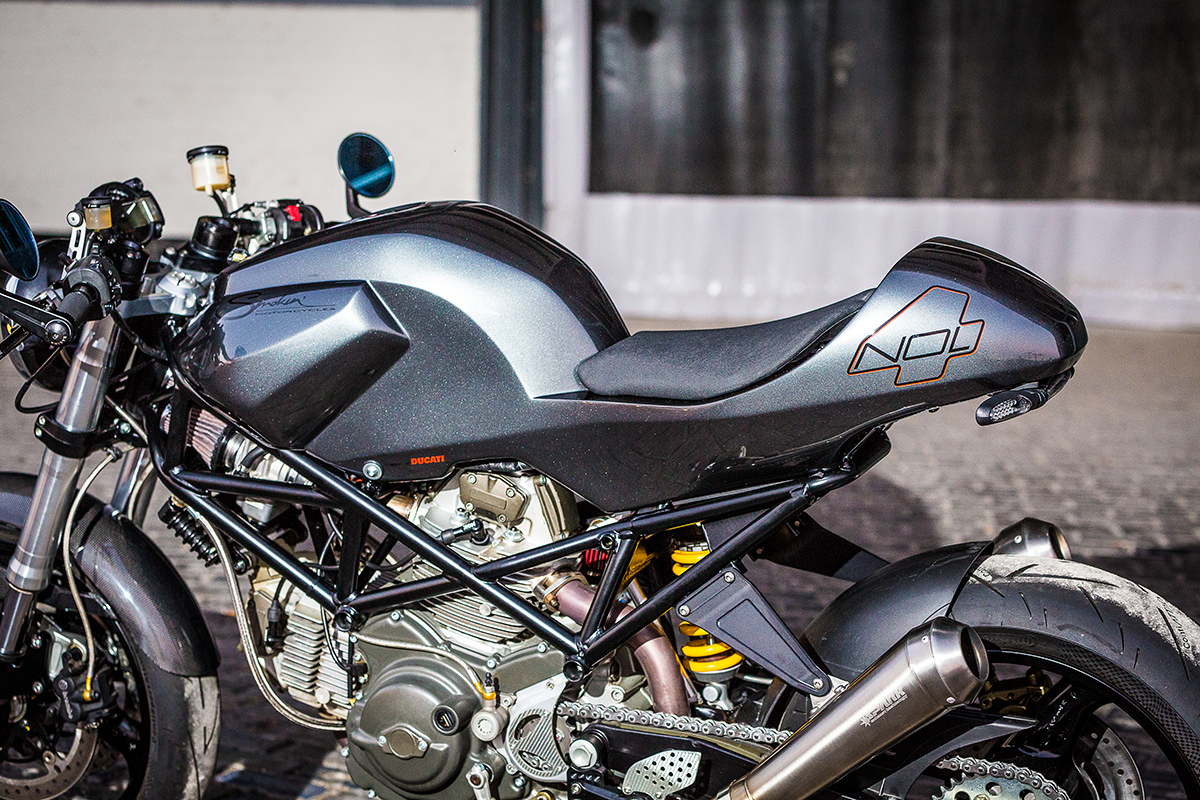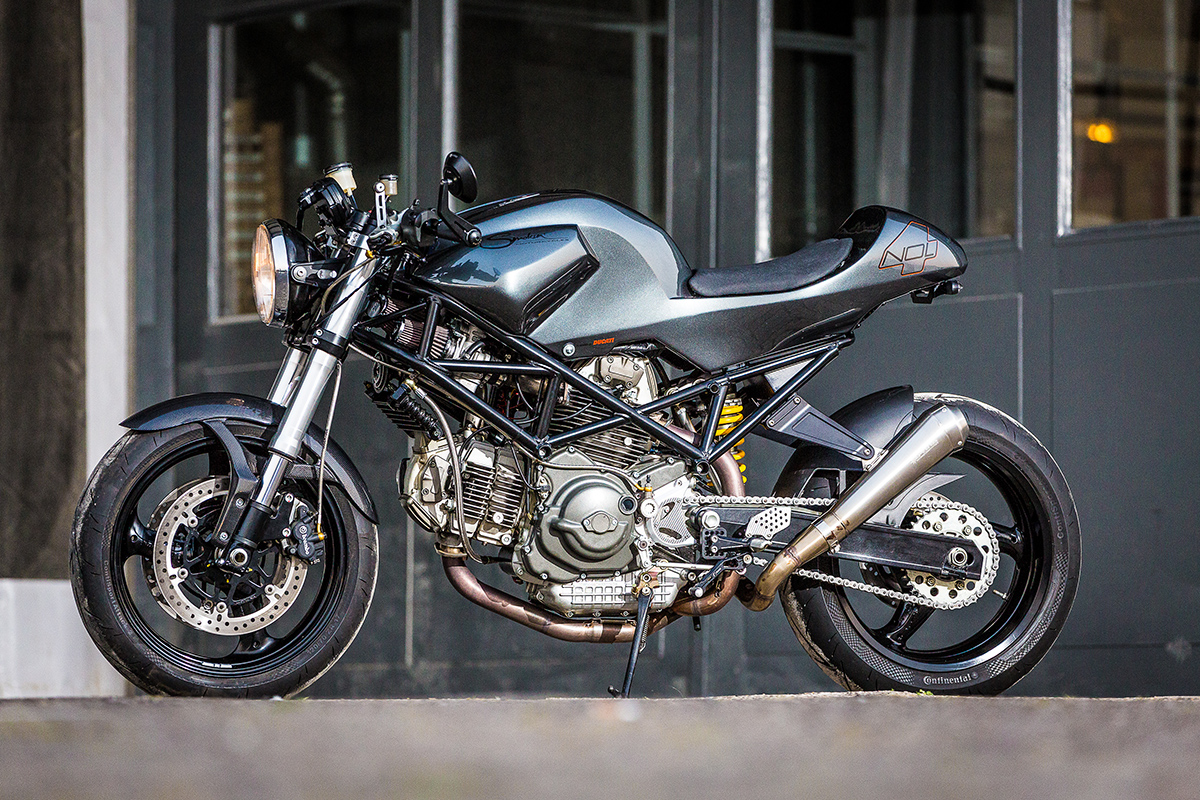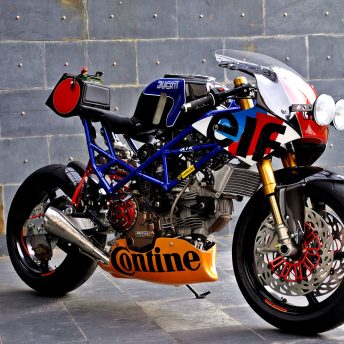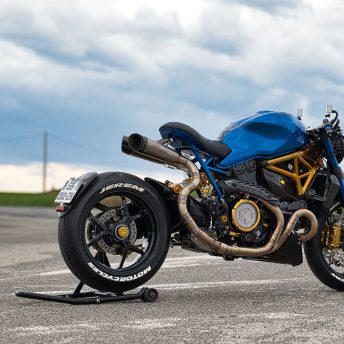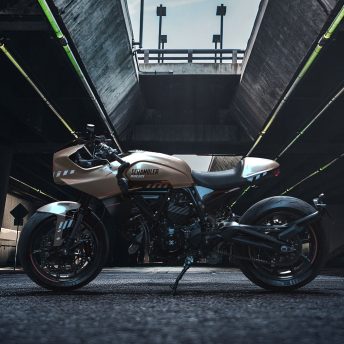In the Netherlands at a workshop named ‘Smokin Motorcycles’ an engineer and an industrial designer have taken things a step further. The pair have designed their own single piece bodywork for the Monsters trellis substructure to even further simplify its design. Their first execution of the concept is called ‘4Nol’ and it’s a great looking take on a modern cafe racer.
Smokin Motorcycles ‘4Nol’ café racer is based on a Ducati Monster platform and was designed and engineered by Smokin cofounder Maarten Timmer. The bikes name is in honour of Maarten’s grandfather Arnold, better known as Nol. Nol was a car mechanic who taught Maarten how to wrench and helped to foster his passion for cars and motorcycles. Together with his business partner Rob, Maarten built the bike in 2 stages, stopping mid-way to complete the construction of the award winning ‘Elegant Bastard‘ for BMW Motorrad the Netherlands.
Rather than starting out with a complete bike the 4Nol was nothing more than an empty frame, set of forks and a pair of wheels. Maarten had wanted to undertake a cafe racer build of his own for some time and when the urge became too much to resist the incomplete basket case was the perfect starting point. To power his project he then acquired a 900ie Ducati engine that fit into the frame with a little bit of effort. So with a rolling chassis and rebuilt powerplant it was a matter of creating the bikes bodywork.
The 4Nol tank and seat were sketched out before being sculpted from clay straight onto the Trellis frame. Happy with how it sat on the bike the clay model was then translated into CAD data using a 3D scanner similar to those used by automotive manufacturers. This acted as the starting point for the digital design of what would become the bikes single piece bodywork. Once work was completed in CAD the models were then translated back into tangible objects using fibreglass moulds. This process also allowed for the creation of the kit for Ducati Monsters that Smokin plan to soon make available to their customers.
With the 900ie engine rebuilt Maarten wanted to make sure they were getting the most out of its performance. For this he pieced together an entirely new 2-into-1-into-2 exhaust system wearing a pair of Spark megaphone silencers. To each of the bikes intakes he also mounted Dell’ Ortho PHM40 carbs wearing K&N Performance filters. Along with sounding great the combination of the carbs and exhaust generate high torque at low revs making the engine most pleasurable under everyday riding conditions.
To mount the bikes custom exhaust system a pair of CNC milled alloy brackets were designed and fabricated in house and paired with a matching set of headlight brackets. Along with the significant weight benefits of the one piece composite bodywork, careful attention was paid to using weight saving components wherever possible. Aluminium was chosen for the rear set footpegs, the front fender is carbon fiber and the concealed battery is a lightweight SuperB.
4Nol’s frame, swingarm and wheels have been powdercoated in satin black to allow the Audi Daytona metallic grey paint on the bodywork to be the focal point of the build. Wanting only the best parts for their build the boys then looked to aftermarket supplier Rizoma for the controls, clip on bars, fluid reservoirs and a full set of alloy engine covers. Last, but certainly not least, the seat was covered in anti-slip leather and the rims wrapped in even grippier Conti Sport Attack 2 rubber in preparation for Marteen to push this Monster to its limits.
If the Pharaohs rode motorcycles I’m certain they would have been stradling Ducatis. The Italian manufacturers trademark triangulated trellis frames are one of the best looking frame designs ever made. In fact they look so good that it almost seems a shame to cover them up with fairings. Thankfully back in 1993 Miguel Angel Galluzzi designed one of the most iconic and best selling Ducatis ever made, the Monster. A naked bike that left the frame exposed and kept bodywork to a minimum. The design leant itself to customisation, but in the past that has consisted mostly of bolt on parts.
